Excerpt: Friends with Benefits: The India-US Story by Seema Sirohi
This extract looks at the changing relationship between the two nations and sheds light on “the strangest Trumpism to come India’s way”
Modi 2.0
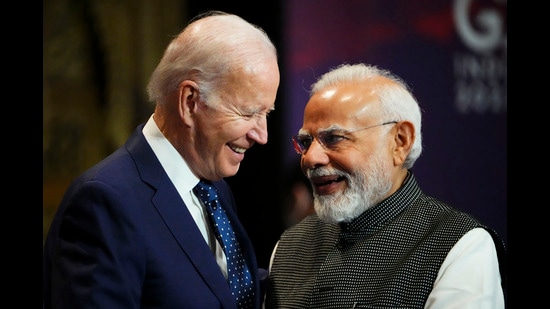
Modi’s decisive victory in the 2019 elections not only stunned India but the world. The Americans were surprised by the size of the mandate. They studied the results in detail, including how well the BJP had done in minority-heavy districts. It was well known that Trump liked ‘strong’ leaders... The Trump administration was keen for India to project itself beyond its neighbourhood and the Indian Ocean region.
But Modi 2.0 also aroused Expectations 2.0 in Washington. US officials hoped for swift decision-making on defence and trade fronts. Pompeo went so far as to repeat an election slogan — ‘Modi hai to mumkin hai [Modi makes things possible]’ — in a speech to encourage imaginative solutions to persistent bilateral problems. Welcoming another term for Modi was one thing, but the cheerleading was unusual. Also noticeable was a lack of public criticism by the State Department on communal tensions in India.
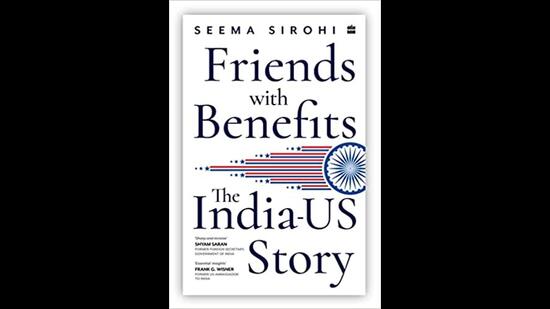
...The sense of superiority was noticeably absent in official discourse. It was partly due to a realization that people living in glass houses couldn’t throw stones. Western democracies were drowning in immigration battles, reports of police atrocities and a resurgence of white supremacist sentiment...
But the main reason for the shift was India’s importance in Washington’s larger Indo-Pacific strategy. Republicans and Democrats agreed that India was crucial for maintaining the existing international order...
Modi appointed S Jaishankar as his new foreign minister, bringing the well-known diplomat to the world of politics. Washington’s elite welcomed the appointment as they knew Jaishankar well. Some called it an ‘inspired’ choice. As foreign secretary, Jaishankar had encouraged his colleagues to see Trump’s disruptive policies as an opportunity to increase India’s options. As minister he would have the power to shape those policies.
Jaishankar tried to read the world as it was, not as it should be. The existing order was crumbling — Trump had changed the rules of engagement. More importantly, China’s rise was no longer ‘peaceful’ and Russia was maximizing its clout. Europe was caught in the middle of the three pillars and having a difficult time adjusting. Countries had fewer ‘set plays’ to deploy in the minefield of rising tensions, tariff wars and diminished international institutions. The new normal demanded new responses.
Two weeks before his appointment as foreign minister, Jaishankar had said India should optimize its ties with all major players. It meant ‘cultivating America, steadying Russia, managing China, enthusing Japan and attending to Europe while increasing India’s footprint in the neighbourhood. “Every relationship will have to be leveraged.” Playing safe was not an option, because it could easily become an “opportunity-denial exercise”, he said. Washington was eager to see how far he was willing to go now that he had the Prime Minister’s ear.
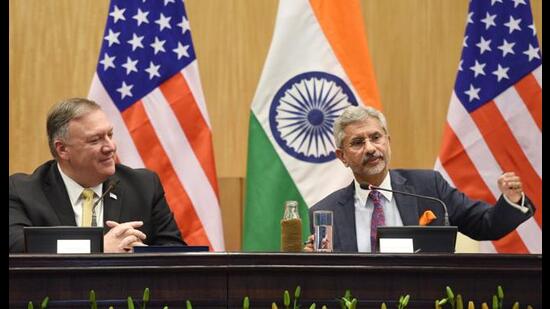
Jaishankar’s first major guest was Mike Pompeo, who went to New Delhi to bring the relationship back from the battlefield of trade disputes. Things had got rough around the edges and even Capitol Hill noticed. Eliot Engel, chairman of the House Foreign Affairs Committee, wrote to Pompeo, saying the administration policies on India were “inconsistent”, coercive and unpredictable. The coercive bit was a reference to the Iran oil sanctions. The fact that Engel made the letter public showed the level of concern at the constant battering of friends and foes alike by Trump.
The pairing of Jaishankar and Pompeo was interesting — one a seasoned realist and the other an evangelical Christian... Such was Pompeo’s religiosity that the New York Times questioned the extent to which his evangelical beliefs influenced American diplomacy. White evangelical Christians were a powerful force in the Republican Party, but “no secretary of state in recent decades has been as open and fervent as Mr Pompeo about discussing Christianity and foreign policy in the same breath”.
The Modi government’s push against Christian NGOs and church groups working in India, and the resultant criticism on Capitol Hill, had become a persistent issue. Jaishankar had to deal with the fallout. He had to simultaneously prove his credentials to the BJP while managing the criticism abroad.
Trump Plays the Kashmir Card
The eighteen months between January 2018 and July 2019 were a political eon. Trump’s opening tweet in 2018 denouncing Pakistan’s deceitful behaviour was in the bin of history. He was getting ready to play host to Imran Khan. Senator Graham, a Trump confidant, had played an important role in convincing Trump that a Khan visit would pay dividends. Key White House officials were not consulted on the matter. Once the visit became inevitable, all Lisa Curtis, senior NSC director for South Asia, could do was try to shape it. She knew the region, the complexities and the sensitivities well.
Curtis briefed Charles Kupperman, the deputy NSA, on the need to maintain a tough line with Pakistan, especially with regard to shutting down the terror shops. She wrote briefing papers for Trump but was not included in the Oval Office briefing for him, as would have been customary. Area experts are usually present in the final briefing for the President. It was also noteworthy that neither Pompeo nor Bolton was in the White House meeting with Khan. In other words, Trump and Graham were unencumbered as they waded intoSouth Asia’s choppy waters.
The wily senator had played up Khan’s glamorous past — his cricketing career, his playboy image and his access to British high society of semi-royals. Trump liked it all. When Khan arrived at the White House on 22 July 2019, Trump welcomed him as “a great athlete, one of the greatest and a very popular Prime Minister”. He was effusive, but he could flatter and berate in equal measure. Trump was supposed to have a one-on-one with Khan with only note-takers present. But to the surprise of US officials, Graham was included, making it a trio.
Trump’s main goal was to cajole Pakistan to help find an exit from Afghanistan. For Khan the White House meeting was an opportunity to press his case for restoring US aid and make a plea to get off the sanctions list under the Financial Action Task Force. To show ‘good faith’ in the fight against terrorism, Pakistan had arrested Hafiz Saeed, founder of Lashkar-e-Taiba, for the sixth time, ahead of Khan’s visit. Since 2001, Saeed had been arrested and released periodically, with no harm to his well-being or fundraising abilities. But then, the entire visit and what came after were a repeat of history.
When Trump and Khan appeared before cameras, a question on Kashmir was expected. Pakistani journalists were in the press pool. About twenty-six minutes in, one of them asked Khan if he would seek Trump’s help to resolve the Kashmir dispute. Yes, he would, said Khan. Opening the floodgates of flattery, he said only Trump, as the President of the “most powerful country”, could push the process. It was a perfect opening and Trump grabbed it with both hands.
What followed was a truly Trumpian experience — a mixture of fact, fiction, bombast and vague generalities. The cherry on top was Trump’s bizarre claim that Modi himself had asked him to mediate when the two met during the G20 summit in Osaka, Japan. This was news to the Indian establishment and to anyone who followed South Asia. An official spokesperson immediately refuted the claim and said Modi had made “no such request” to Trump.
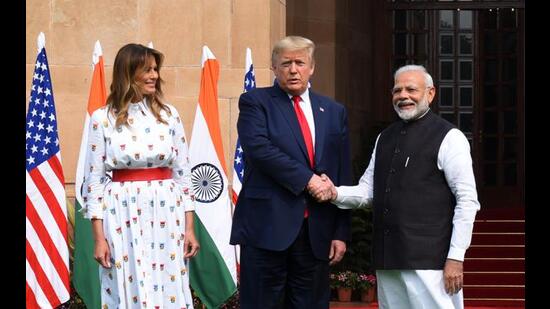
The Kashmir verbal missile was the strangest Trumpism to come India’s way. With Khan sitting beside him, Trump said, “I was with Prime Minister Modi two weeks ago, and we talked about this subject, and he actually said, ‘Would you like to be a mediator or arbitrator?’ I said, ‘Where?’ He said, ‘Kashmir.’ Because this has been going on for many, many years. I was surprised at how long … I think they’d like to see it resolved, and you’d like to see it resolved, and if I can help, I’d love to be a mediator.”
Offering to mediate was one thing, but to claim Modi asked him to do so was another level of bizarre. Trump was implying Modi had reversed decades of Indian policy that Kashmir was a bilateral matter and no outside mediation was needed. It was like the ABC of Indian foreign policy, no matter who was in power. Trump’s claim was so incredible that no one believed it — not even Pakistani Twitter.
US officials, including Curtis, were watching the show and holding their heads. They were horrified. They immediately went into damage control mode... Curtis quickly organized a briefing for Trump, so he could understand the full meaning of what he had said. She had to squash future presidential forays into Kashmir. The briefer apparently told Trump there was nothing to be gained from mediation efforts in Kashmir. Trump seemed to finally understand this path was best left untravelled.
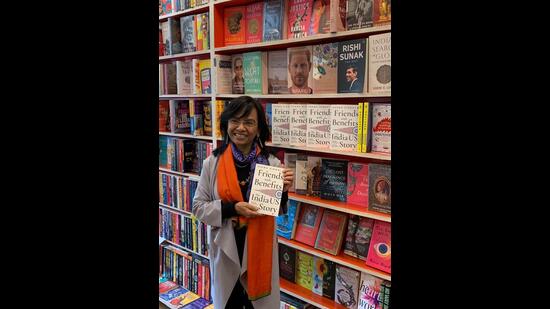
...It’s unclear what Trump was trying to accomplish by claiming Modi asked him to mediate on Kashmir... When senior Indian officials met Graham to find out, the senator assured them that Pakistan was the last country the US would trust. “We have to go through this charade [Khan’s visit] because we have an objective — to pull the troops out with minimum attrition,” Graham told them. Pompeo, too, had said that Khan’s visit was just a visit, not a precursor to a policy shift.
Even so, the policy was shifting right in front of everyone’s eyes. A few days before Khan’s visit, the US allowed a $6-billion loan to Pakistan from the International Monetary Fund. The State Department also designated the Balochistan Liberation Army (BLA) as a terrorist organization. It was an old request by Pakistan, but the US had ignored it because of the abysmal state of human rights in Balochistan, where people “disappeared” constantly. Before Khan’s arrival, Pompeo decided to sweeten the pot for the Pakistan Army. But the biggest ‘reward’ for Pakistan was the White House visit.
Continue reading with HT Premium Subscription




